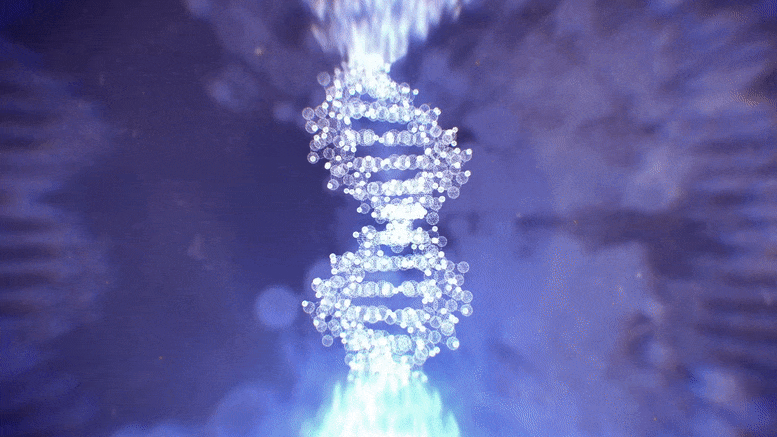
Despite enormous disparities in longevity and body mass, new research has revealed that the number of genetic mutations acquired by 16 species is similar across their lifetimes.
Quantity of mutations acquired is similar over the lifetime of 16 species, despite vast differences in lifespan and body mass.
The first study to evaluate the accumulation of mutations across a wide range of animal species has shed fresh light on long-standing debates regarding the role of genetic changes in aging and cancer. Despite vast differences in lifespan and size, researchers from the Wellcome Sanger Institute discovered that diverse animal species end their natural lives with similar numbers of genetic alterations.
The study, published on April 13, 2022, in the journal Nature, analyzed genomes from 16 species of mammal, from mice to giraffes. The authors confirmed that the longer the lifespan of a species, the slower the rate at which mutations occur, lending support to the long-standing theory that somatic mutations play a role in aging.
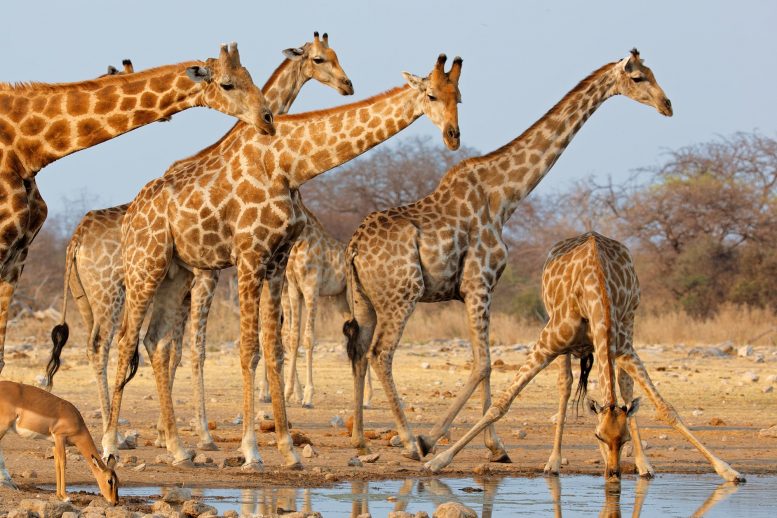
The study looked at the genomes of 16 different mammal species, ranging from mice to giraffes. The research found that as a species’ longevity increases, the rate of mutations decreases, confirming the long-held idea that somatic mutations play a role in aging.
Genetic changes, known as somatic mutations, occur in all cells throughout the life of an organism. This is a natural process, with cells acquiring around 20 to 50 mutations per year in humans. Most of these mutations will be harmless, but some of them can start a cell on the path to cancer or impair the normal functioning of the cell.
Since the 1950s, some scientists have speculated that these mutations may play a role in aging. But the difficulty of observing somatic mutations has made it challenging to study this possibility. In the last few years, technological advances have finally allowed genetic changes to be observed in normal tissues, raising hopes of answering this question.[1]
Another long-standing question is Peto’s paradox. Since cancers develop from single cells, species with larger bodies (and therefore more cells) should theoretically have a much higher risk of cancer. Yet cancer incidence across animals is independent of body size. Animal species with large bodies are believed to have evolved superior mechanisms to prevent cancer. Whether one such mechanism is a reduction in the accumulation of genetic changes in their tissues has remained untested.
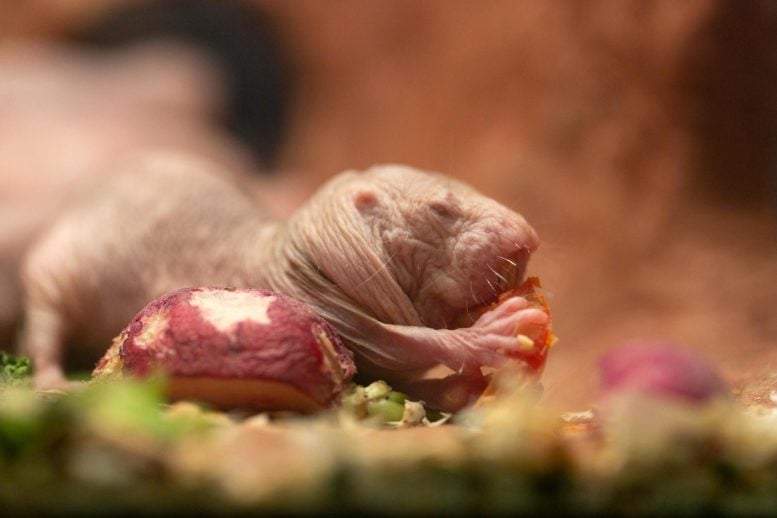
The long-lived, highly cancer-resistant naked mole-rat was among the species studied in the research.
In this study, researchers at the Wellcome Sanger Institute set out to test these theories by using new methods to measure somatic mutation in 16 mammalian species, covering a wide range of lifespans and body masses.[2] This included species such as human, mouse, lion, tiger, giraffe, and the long-lived, highly cancer-resistant naked mole-rat, with samples provided by a number of organizations including the Zoological Society of London.
Whole-genome sequences were generated from 208 intestinal crypts[3] taken from 48 individuals, to measure mutation rates in single intestinal stem cells.
Analysis of the patterns of mutations (or mutational signatures) provided information on the processes at work. The researchers found that somatic mutations accumulated linearly over time and that they were caused by similar mechanisms across all species, including humans, despite their very different diets and life histories.
Evidence of a possible role of somatic mutations in aging was provided by the researchers’ discovery that the rate of somatic mutation decreased as the lifespan of each species increased.
Dr. Alex Cagan, a first author of the study from the Wellcome Sanger Institute, said: “To find a similar pattern of genetic changes in animals as different from one another as a mouse and a tiger was surprising. But the most exciting aspect of the study has to be finding that lifespan is inversely proportional to the somatic mutation rate. This suggests that somatic mutations may play a role in aging, although alternative explanations may be possible. Over the next few years, it will be fascinating to extend these studies into even more diverse species, such as insects or plants.”
The search for an answer to Peto’s paradox goes on, however. After accounting for lifespan, the authors found no significant association between somatic mutation rate and body mass, indicating that other factors must be involved in larger animals’ ability to reduce their cancer risk relative to their size.
Dr. Adrian Baez-Ortega, a first author of the study from the Wellcome Sanger Institute, said: “The fact that differences in somatic mutation rate seem to be explained by differences in lifespan, rather than body size, suggests that although adjusting the mutation rate sounds like an elegant way of controlling the incidence of cancer across species, evolution has not actually chosen this path. It is quite possible that every time a species evolves a larger size than its ancestors – as in giraffes, elephants, and whales – evolution might come up with a different solution to this problem. We will need to study these species in greater detail to find out.”
Despite vast differences in lifespan and body mass between the 16 species studied, the quantity of somatic mutations acquired over each animal’s lifetime was relatively similar. On average a giraffe is 40,000 times bigger than a mouse, and a human lives 30 times longer, but the difference in the number of somatic mutations per cell at the end of lifespan between the three species only varied by around a factor of three.
Dr. Simon Spiro, ZSL (Zoological Society of London) wildlife veterinary pathologist, said: “Animals often live much longer in zoos than they do in the wild, so our vets’ time is often spent dealing with conditions related to old age. The genetic changes identified in this study suggest that diseases of old age will be similar across a wide range of mammals, whether old age begins at seven months or 70 years, and will help us keep these animals happy and healthy in their later years.”
Understanding the exact causes of aging remains an unsolved question and an area of active investigation. Aging is likely to be caused by the accumulation of multiple types of damage to our cells and tissues throughout life, including somatic mutations, protein aggregation and epigenetic changes, among others. Comparing the rates of these processes across species with very different lifespans can shed light on their role in aging.
Dr. Inigo Martincorena, senior author of the study from the Wellcome Sanger Institute, said: “Aging is a complex process, the result of multiple forms of molecular damage in our cells and tissues. Somatic mutations have been speculated to contribute to aging since the 1950s, but studying them had remained difficult. With the recent advances in DNA sequencing technologies, we can finally investigate the roles that somatic mutations play in aging and in multiple diseases. That this diverse range of mammals end their lives with a similar number of mutations in their cells is an exciting and intriguing discovery.”
Notes
- Further information on the study of somatic mutation in healthy cells is available on the Sanger Institute website.
- The full list of species sequenced is: black-and-white colobus monkey, cat, cow, dog, ferret, giraffe, harbor porpoise, horse, human, lion, mouse, naked mole-rat, rabbit, rat, ring-tailed lemur, and tiger.
- Colonic crypts are anatomical structures in the epithelium of the colon. Because all of the cells in a crypt are descended from a single stem cell, they are ideal for studying the rates and patterns of somatic mutation.
Reference: “Somatic mutation rates scale with lifespan across mammals” by Alex Cagan, Adrian Baez-Ortega, Natalia Brzozowska, Federico Abascal, Tim H. H. Coorens, Mathijs A. Sanders, Andrew R. J. Lawson, Luke M. R. Harvey, Shriram Bhosle, David Jones, Raul E. Alcantara, Timothy M. Butler, Yvette Hooks, Kirsty Roberts, Elizabeth Anderson, Sharna Lunn, Edmund Flach, Simon Spiro, Inez Januszczak, Ethan Wrigglesworth, Hannah Jenkins, Tilly Dallas, Nic Masters, Matthew W. Perkins, Robert Deaville, Megan Druce, Ruzhica Bogeska, Michael D. Milsom, Björn Neumann, Frank Gorman, Fernando Constantino-Casas, Laura Peachey, Diana Bochynska, Ewan St. John Smith, Moritz Gerstung, Peter J. Campbell, Elizabeth P. Murchison, Michael R. Stratton and Iñigo Martincorena, 13 April 2022, Nature.
DOI: 10.1038/s41586-022-04618-z

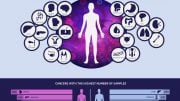
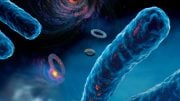
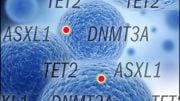
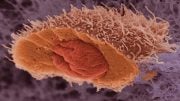
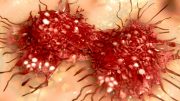
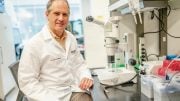
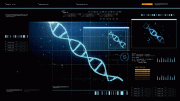
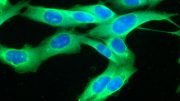
Very Interesting. Only Major SHIFT From Inundation in Cultural aspects of Life to Inundation in Advanced SciTech aspects of Life in 80% of Human Population, leaving the rest for other Human professions can accelerate badly needed achievements such as those cited in this article; Movies & Youtube will keep the original aspects of life going, providing simultaneously the knowledge and tending to the Emotions that are most seen in Humans only (Yes. Some Vertebrates do have emotions to a limited extent). Bidding Goodbye to Magic is of Paramount Importance in this context.
Tardigrades are Invertebrates. But, they do have Cancer Resistance and Resistance to Extreme Living Conditions which we Badly LACK; We do see Co-operation among Honey Bees, Ants etc., which are Invertebrates…But, we cannot decipher whether they do have Emotions. I have seen Pet Monkeys on Youtube Continuously Crying, when deprived of some thing, such as younger pet colleague’s hug. It is Extremely important to Transfer Great Features of Tardigrades ASAP to some selected, suitable Lab Animals first. In next Century or so, such acquired knowledge will be useful/practically applicable to Humans also. We do indulge in Wars that Animals are proficient in.